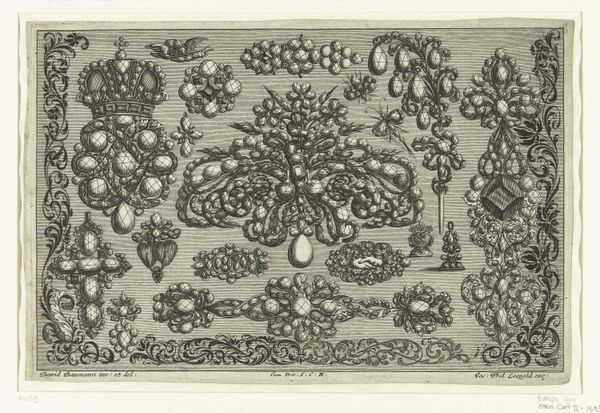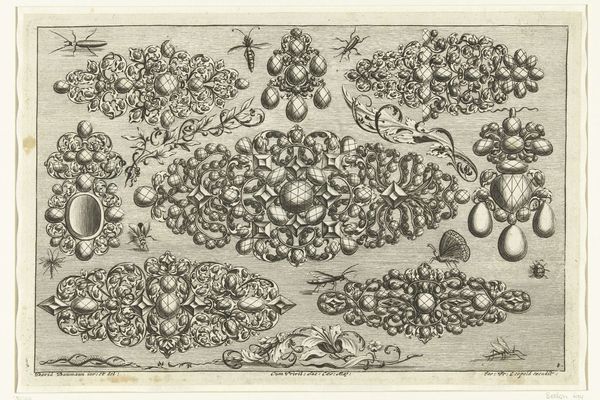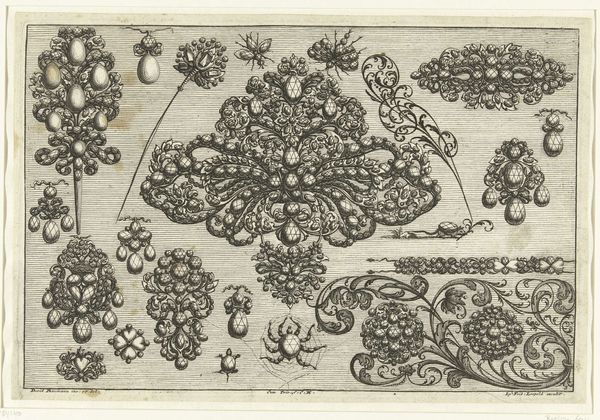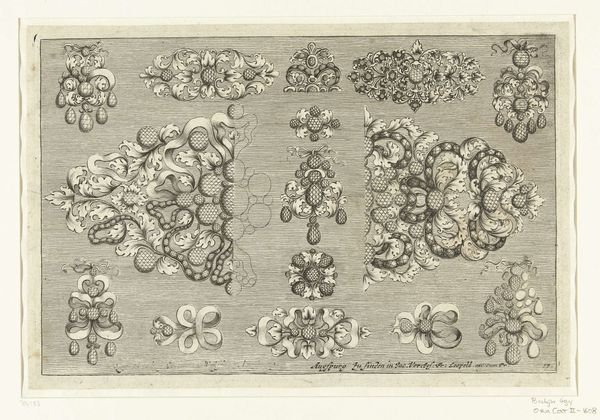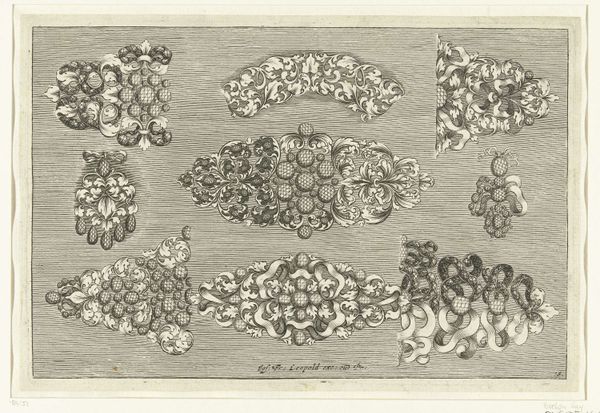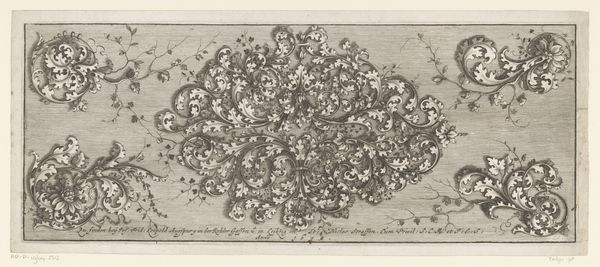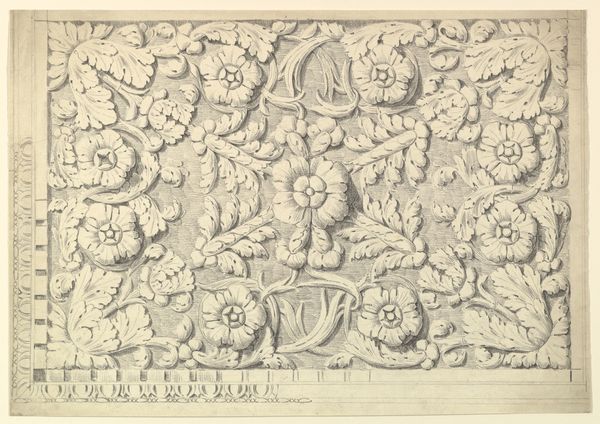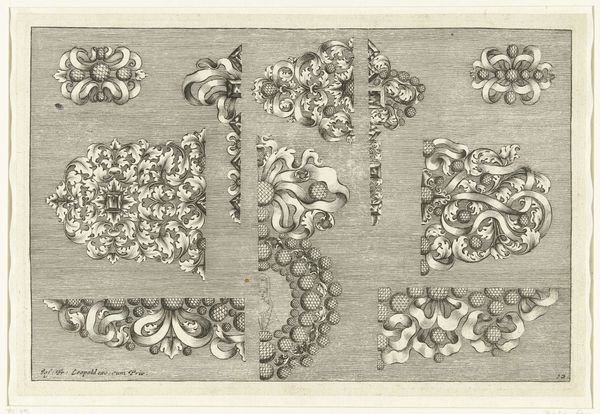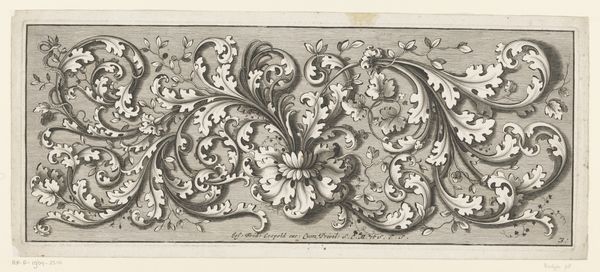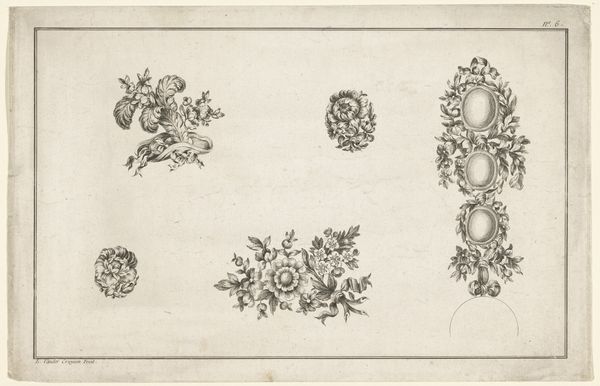
drawing, print, metal, engraving
#
drawing
#
baroque
#
pen drawing
# print
#
metal
#
geometric
#
intricate pattern
#
line
#
pen work
#
decorative-art
#
engraving
Dimensions: height 178 mm, width 270 mm
Copyright: Rijks Museum: Open Domain
Curator: Look at this amazing detailed composition—"Achttien ontwerpen voor juwelen en drie insecten" or, "Eighteen Designs for Jewelry and Three Insects"—dating back to 1695 by Joseph Friedrich Leopold. It’s currently housed in the Rijksmuseum. Editor: It’s certainly intricate. The density of the line work creates a sense of shimmering opulence, but something about the rendering also feels… airless, almost claustrophobic. Curator: Absolutely, and to consider it, we must contextualize jewelry design within the Baroque era. Often these items signified power and social status. The engraving, drawing and print show a period fascinated with ornamentation but also emerging natural sciences with insects depicted, perhaps reflecting ideas about the human and the natural worlds coexisting. Editor: Semiotically, we can deconstruct each motif: the repetition of circles, the use of geometric elements against the softer shapes of what appear to be pearls. Each shape almost becomes a signifier itself – does the teardrop shape suggest sadness, or simply adornment? The composition invites us to trace relationships between forms to decode its meaning. Curator: I see your point and would add to this perspective, by exploring how the privilege to commission such luxury items intersects with access and visibility. The craftsmanship of this work would speak volumes of social position in 17th-century European circles. Moreover, if we factor the history of trade in gems with colonial histories we confront not only wealth but power dynamics implicit in resource acquisition. Editor: An insightful socio-historical angle! Back to pure form—consider the line work, its incredible precision creates texture and dimensionality. And the deliberate placement of the insects adds dynamism, puncturing what could have been an overly rigid presentation. Curator: Indeed; I find it especially compelling how Leopold positions the designs not just as adornments, but reflecting larger conversations around natural sciences as the period explored concepts in botany and biology. It brings forth questions regarding wealth and power in scientific advancement. Editor: Yes, a fusion of artistic and perhaps even nascent scientific exploration, manifested through the objecthood of jewelry, definitely provides great insight here. Curator: Exactly. Looking closer has shifted my own interpretation—thank you.
Comments
No comments
Be the first to comment and join the conversation on the ultimate creative platform.
